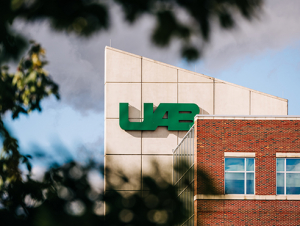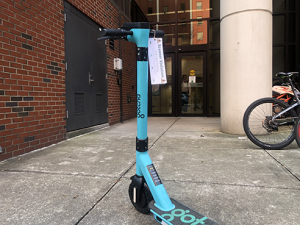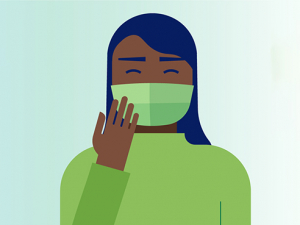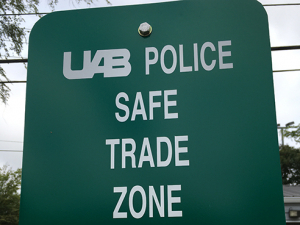 The University of Alabama at Birmingham continues to perform well in safety statistics, especially when compared to similar urban institutions with medical facilities.
The University of Alabama at Birmingham continues to perform well in safety statistics, especially when compared to similar urban institutions with medical facilities.
“We have made the safety of our students, employees and visitors a priority, and we work to maintain and improve it with secure facilities, the latest technology and a nationally accredited police force supported with analysis, training and communication,” said Anthony Purcell, UAB Chief of Police and associate vice president for the UAB Department of Police and Public Safety
UAB and its Health System, which comprise 100-plus city blocks, has a combined employee/student population of more than 48,000. In addition, annual patient visits to UAB Hospital — the nation’s eighth-largest hospital — exceed 1.5 million, and thousands of patrons of the arts, athletics and other special events come to campus throughout the year.
Despite being an open campus in an urban setting, UAB continues to experience low rates of on-campus crime — especially when compared to institutions of similar size, location and mission, Purcell says. He bases this on statistics collected by the U.S. Department of Education that reflect criminal incidents, such as sex-related offenses, robbery and burglary, plus property crimes and more.
The most recent data available on the U.S. Department of Education Campus Safety and Security website — which allows searches of campus security data mandated by the federal Clery Act — shows that UAB compares favorably to urban and non-urban campuses — from the universities of California San Diego, Colorado, Minnesota, Kentucky and Illinois-Chicago, to Duke, Emory, Rice and Vanderbilt universities.
The perception of safety on this urban campus also continues to improve, according to the annual citizen survey UAB Police conducts as a tenet of its national accreditation by the Commission on Accreditation for Law Enforcement Agencies (CALEA).
The percentage of Citizens Survey respondents whose safety concerns were elevated or high in 2016 dropped by more than half in 2021, and respondents whose safety concerns were low more than doubled over the same five-year period:
- Low: 2016 (13%), 2021 (33%)
- Average: 2016 (42%), 2021 (47%)
- Elevated: 2016 (29%), 2021 (13%)
- High: 2016 (16%), 2021 (7%)
Purcell attributes improved security — and its perception — in large part to the three-phase building-security plan that has been underway since 2019. These upgrades, now in the final phase, include required key-card access and after-hours access restrictions for facilities. Additionally, improved lighting and alarms enhance security for faculty, staff, students and visitors, and the number of closed-circuit security cameras has more than doubled to 6,400.
UAB also employs a variety of other security measures to protect the campus community:
- a Behavioral Threat Assessment and Management Team,
- technology that spans more than 450 emergency telephones, the B-Alert emergency notification system and the free UAB RAVE Guardian safety app,
- motorist assistance roadside service,
- safety awareness and training programs, plus
- transportation alternatives such as Blazer Express buses and after-hours safety escort vans.
Many of these upgrades were recommendations included by the Campus Safety Task Force in its 2015 report.
“We are pleased with the progress we have made to reduce crime and the perception of crime on our campus, and we will continue to work with our constituents and community partners to maintain a safe environment,” said UAB President Ray Watts, who commissioned the report.
No campus is isolated from crime; however, much can be done to reduce the opportunities for criminals. “Because the vast majority of crime on all college campuses — including UAB — is theft of property such as small personal items, we urge students, faculty and staff to secure their personal belongings, lock the door when you leave your residence hall room and remove valuables from vehicles.”
How can you assess campus safety?• The CLERY Report provides the most reliable campus-safety data. The Clery Act is a federal statute requiring colleges and universities participating in federal financial aid programs to disclose campus crime statistics and security information Oct. 1 of each year. The U.S. Department of Education evaluates each institution's compliance with all the Clery Act requirements and posts results online in a searchable format. • UAB’s annual campus safety report is publicly available online, and campus safety data is updated monthly. Anyone can access the annual report and other safety resources on the website of UAB Police and Public Safety. Read UAB’s 2021 Clery report here. You can review statistics for each month online. Locate UAB safety resource info at uab.edu/safety. |


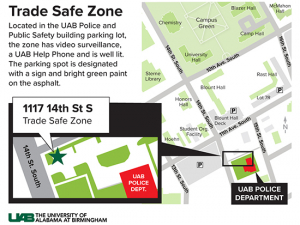


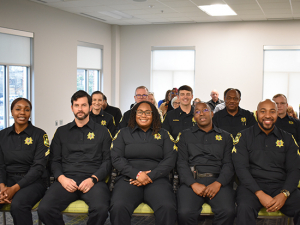

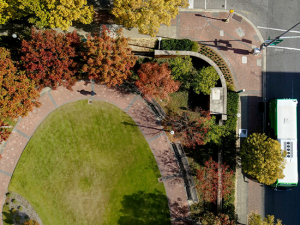


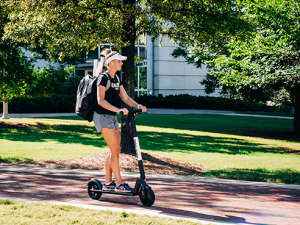
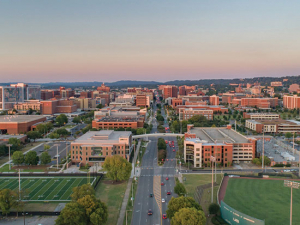
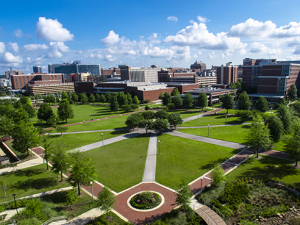

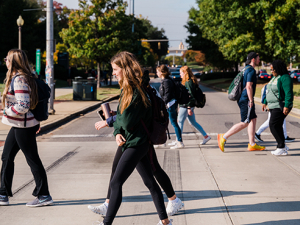

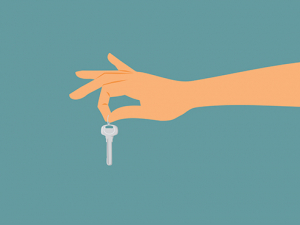
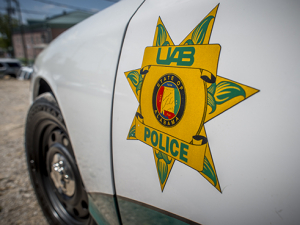

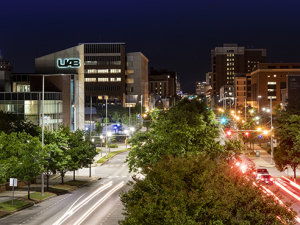
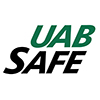 UAB is committed to fostering a safe and inclusive environment for all Blazers. From mobile apps to bus escort services to B-Alerts and more, make sure you’re up to date on all the ways to stay safer on campus.
UAB is committed to fostering a safe and inclusive environment for all Blazers. From mobile apps to bus escort services to B-Alerts and more, make sure you’re up to date on all the ways to stay safer on campus.


